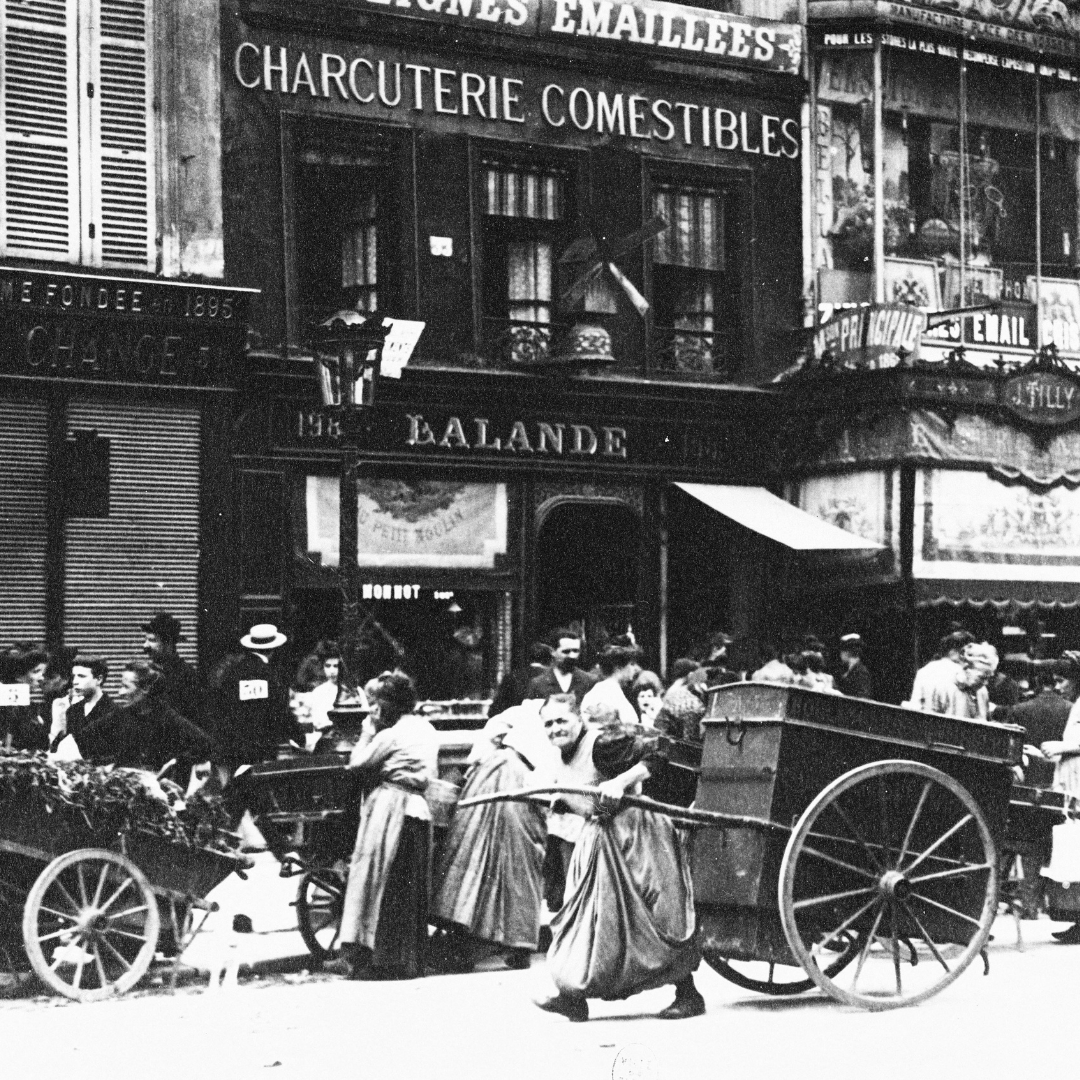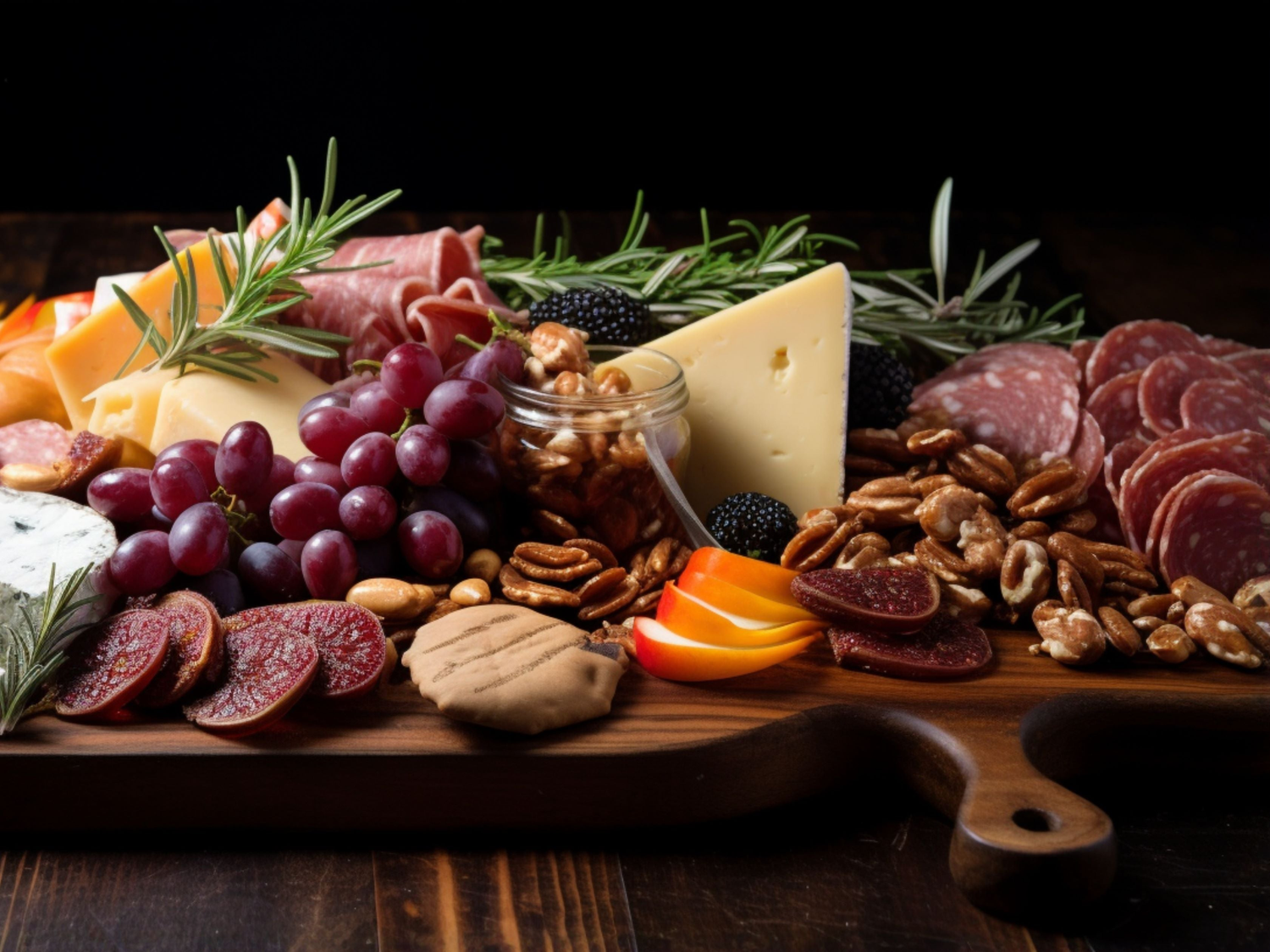
A History of Charcuterie and Cheese Board Evolution
Despite modern-day charcuterie boards being thought of as a cheese board: typical charcuterie boards being a fun variety of cheeses; or equated with breakfast boards, dessert boards, butter boards... the list goes on. The fact is, the modern charcuterie board dates back past ancient rome, thru many ancient civilizations. And the term charcuterie doesn't actually have anything to do with cheese - it is a reference to cuts of meat!
Term: Charcuterie
Charcuterie is a term we borrowed from the French. It's a french term used to describe prepared or preserved meat products. Anything from ballotines (those beautiful cut swirls, or whole rolls, of meat stuffed with yummy things you might have seen at the butcher) to bacon (one of my personal favorites) qualifies for this culinary art.
The art of charcuterie really goes a long way back in history - prepared meat for hundreds and hundreds of years, before the word ‘charcuterie’ even existed. In 3000 BC in Mesopotamia, cooked meats and fish were preserved in sesame oil and dried, salted meat and fish were part of the Sumerian diet.
Pre-Charcuterie Meat Curing
The origin of meat curing can be traced back to the third century BC, when Cato recorded careful instructions for the dry curing of hams.
Cured meat was a staple element in meals across the globe, especially in winter when fresh food was more scarce due to insufficient feed to keep livestock over winter. But no matter how thrifty the housewife, who's job usually included managing the household accounts and stores, eking out through the whole winter meant storing a variety of meats to go with the stored onions, leeks, and dried fruit.

Russian butchers selling cured meats (date unknown). Cured meats were especially important in cold regions during winter months, when food was more scarce.
Of course, the wealthier landowners could keep more meat. In fact, some estimate that English royalty diet in the 15th century was 80% meat, accompanied by seasonal vegetables or fruit.
No matter which way you cut it, since well before 1830 (when refrigeration came around), everyone used the time-tested methods of either salting, spicing, smoking, pickling, aging, canning, and/or drying to keep their various types of meats. In fact our family, who believe in nose-to-tail eating, use a number of these methods regularly still!
Origins of Charcuterie
Although curing and preparing meat has been around nearly forever, the word “charcuterie” didn’t come about until the late Middle Ages in France. We get the term from the French words of “chair” and “cuit,” which literally translates to English as “flesh cooked” (delicately put, I agree). During 15th century france, the 1400s, strict laws prevented the mixing of raw and cooked pork products, and the name was given to those pork products which were cooked or preserved - this included salted and dry-cured pork (like salami), pâté, rillettes, and terrines.

"You can choose what you like; the price is the same for all of them." So says the caption in this historical depiction of a charcuterie shop.
Charcutiers were forbidden from selling raw meat, apart from pork fat which could be rendered into lard. “Charcuterie” used to be used in reference to only the meats themselves; however, over time, it expanded to the presentation of the meat, with charcutiers trying to outdo each other with impressive arrangements.
Sketches of the Day: New Parisian butcher's shop, published in Le Charivari, April 22, 1865
Evolution of the Charcuterie Board
Since being utilized mostly in storefronts in France, modern charcuterie has a much broader definition. We started seeing the charcuterie presentations in restaurants and at lavish dinner parties. And this is part of the reason why it is so popular in recent years.
Especially now, since the foodie scene has expanded into our homes and we look for easy ways to make our dining experiences special. And now today's charcuterie boards are including our homemade sourdough, vegetables from our garden, some of our dry cured meats, homemade dukkah, balsamic/olive oil dipping, and anything else we feel like attempting to create. (Have you tried a butter board yet?) In contrast, sometimes we keep it simple and stay with a more traditional charcuterie board - throw a little bit of soft cheeses and an array of meats, italian meats, maybe some fresh fruit, on a wooden board and call it a gourmet snack.
Don’t Forget the Wine
And with food, one cannot forget the refreshment. We tend to pair our boards with a nice wine or beer, which also has a bit of history! Despite what it may look like, it’s not just an excuse to enjoy a glass… or maybe it is.
Pairing alcohol with cheese and charcuterie also has a rich history. It is believed that beer was invented before writing! And most people, including children, drank ale with their food. Those who could afford it or had access to it, drank wine.

Water was usually too dirty to drink. And although water purification systems on a small scale have been around since 500BC - municipal water treatment plants were not invented until 1804.

Roman soldiers depicted drinking wine and eating cheese in Comic History of Greece (1902)
We always keep some wine stored for just the occasion that we want to have a glass to pair with our charcuterie. Everything goes well with a chilled, sparkling wine. Sauvignon Blanc or Pinot Noir work well if you want something on the lighter side; for full-bodied red wines, we prefer the Malbec or Cabernet Fran. Whatever your preference, make sure you store your wine so you can enjoy it anytime.
Get Our Guide to Unforgettable Charcuterie Pairings
Next time you want to give your tastebuds something to talk about, use our complimentary guide to unforgettable food pairings. The guide will be delivered instantly to your inbox.Are you ready to try your hand at this timeless culinary art? If so, we have a basic charcuterie board tutorial to use so that you can put together your first spread. You can quickly put together a balanced meal to share with those you love – and on social media!
Cheers to the history of charcuterie boards and to ancient times!


